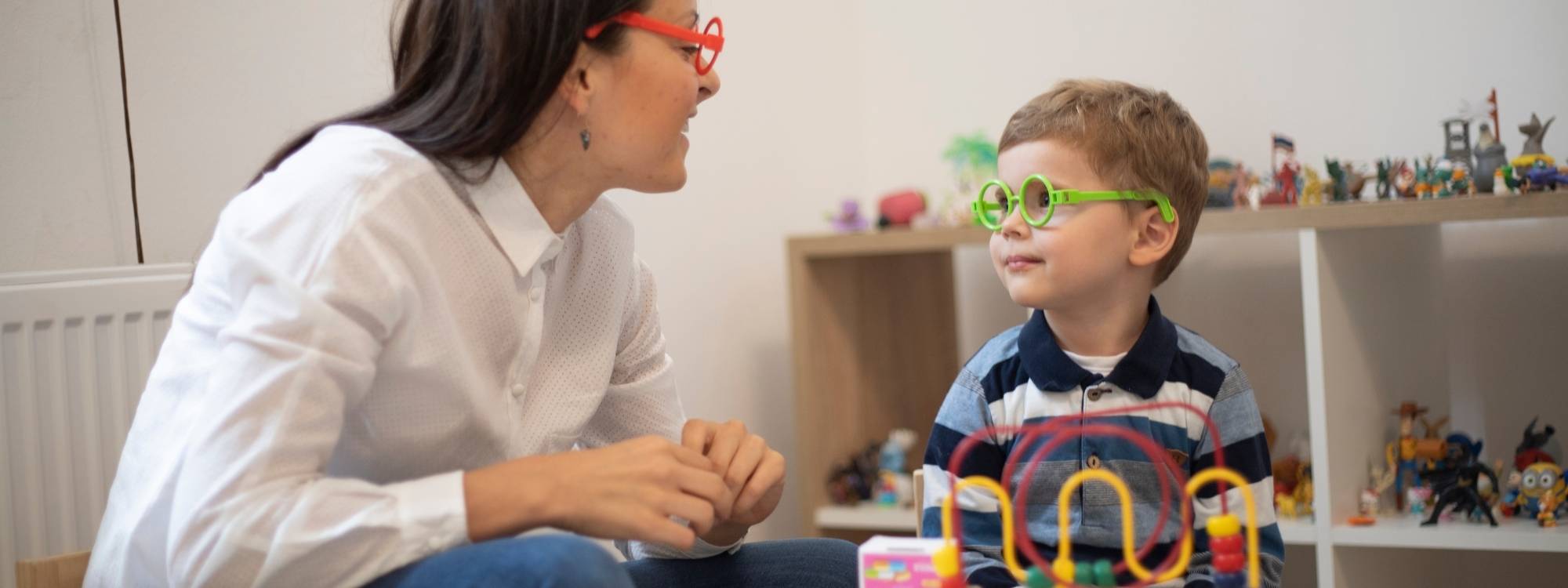Language development in autistic children varies widely, and for some, verbal speech may take longer or require alternative communication paths. For parents of nonverbal autistic children, the question “Can my child learn to speak?” is both emotionally and practically significant. While not every nonverbal child will develop spoken language, many can make significant gains in communication, especially with the right support and early intervention. Understanding the many factors that affect language acquisition is essential to building an informed, hopeful path forward.
Introduction to Language Development
Language development is a complex process shaped by cognitive, neurological, and social factors. When asking whether nonverbal autistic children can learn to speak, it’s important to recognize that every child develops differently. While some may gain verbal skills over time, others may rely on sign language, picture-based systems, or speech-generating devices to communicate effectively. With the right support, many nonverbal children make meaningful progress in their ability to express themselves.
Nonverbal autistic children may not use spoken language, but they can still learn to communicate in meaningful ways. With the right support, many nonverbal children learn to express themselves through gestures, facial expressions, or tools like AAC. While not all will speak, some do develop verbal skills over time, especially with early intervention and consistent guidance.
Research shows that early language development is a strong predictor of long-term outcomes for autistic children. According to a study published in Pediatrics, most children with autism who developed functional speech did so by age 5, highlighting the importance of early childhood support.
Understanding Nonverbal Autism
Nonverbal autism refers to individuals on the autism spectrum who do not use spoken language to communicate. It is not a separate diagnosis, but a descriptive term within autism spectrum disorder (ASD). These individuals may have significant challenges with verbal language but often develop other ways to communicate.
Nonverbal communication includes:
- Facial expressions
- Gestures
- Eye contact
- Body language
Many children with nonverbal autism use tools like sign language, the Picture Exchange Communication System (PECS), or speech-generating devices (SGDs). These methods can significantly improve expressive language skills and decrease problem behaviors related to frustration.
Each autistic child is unique, and nonverbal status in early childhood does not always predict lifelong silence. Some children begin speaking later or use mixed methods of communication.
Autism Spectrum Disorder and Language
Autism spectrum disorder (ASD) is a neurodevelopmental condition that affects how a person communicates, behaves, and interacts with others. While some autistic individuals speak fluently, others face significant delays or differences in verbal language development.
Children with ASD may experience:
- Delayed or absent speech
- Limited use of gestures or symbolic play
- Repetitive behaviors that interfere with social interaction
Importantly, a lack of speech does not indicate low intelligence. Many nonverbal individuals have average or even above-average IQ scores. Standardized tests often fail to accurately reflect their cognitive abilities due to the communication barriers involved.
A study in the Journal of Autism and Developmental Disorders found that many children labeled as “nonverbal” at age 4 developed functional speech by age 8, especially with consistent support.
Supporting the Autistic Child’s Communication
Support for nonverbal autistic children must be personalized and holistic. Families, therapists, and educators should work together to create an environment that encourages communication in all its forms.
Effective supports include:
- Speech therapy: A speech therapist can design a custom plan based on the child’s communication level and needs.
- Occupational therapy: Helps improve sensory processing and motor skills that support communication.
- AAC tools: Devices and systems like tablets with communication apps or PECS can enable expressive language.
- Parent involvement: Caregivers are essential in reinforcing communication skills through daily routines and play.
Early intervention is critical. According to the CDC, the earlier services begin, the more effective they can be in improving developmental outcomes.
Can Nonverbal Autistic Children Learn to Speak?
Yes, some nonverbal autistic children can develop spoken language. While not all will become fluent speakers, many may progress from using a few words or simple phrases to more complex communication over time.
Several factors influence whether a child develops speech:
- Age at intervention: Children who begin therapy earlier have better outcomes.
- Cognitive abilities: Higher receptive language and learning capacity can support verbal development.
- Consistency of support: Regular, evidence-based therapy across settings (home, school, community) is key.
- Co-occurring conditions: Intellectual disability or apraxia of speech may impact progress.
Parents should focus not just on verbal speech but on building overall communication abilities. Encouraging all forms of language, whether spoken, signed, or symbolic, helps children feel understood and reduces frustration.
Communication Alternatives for Nonverbal Children
Even if spoken language is limited or delayed, there are many effective ways nonverbal autistic children can communicate. These tools build expressive and receptive language and often act as bridges to verbal speech.
Common alternatives include:
- Sign language – helps children express simple phrases or needs
- Picture Exchange Communication System (PECS) – uses images to build sentence structures
- Speech-generating devices (SGDs) – allow children to select symbols that produce spoken words
- Written language – some children may prefer writing or typing to communicate
These methods empower children to interact with others, make choices, and express emotions, critical skills for social and emotional development.
Early Signs of Language Delays in Autism
Identifying language delays early can lead to timely intervention and better outcomes. Parents should look for key developmental signs, especially in the first two years of life.
Early red flags include:
- Limited babbling or vocal play by 12 months
- Lack of eye contact or response to name
- No use of gestures (pointing, waving) by 12–15 months
- No spoken words by 16 months
- No two-word phrases by 24 months
If you notice any of these signs, consult a developmental pediatrician or speech-language pathologist for an evaluation.
Myths About Nonverbal Autism
Misconceptions about nonverbal autistic individuals are widespread and harmful. It’s important to challenge these myths with facts and empathy.
| Myth | Fact |
|---|---|
| Nonverbal means unintelligent | Many nonverbal individuals have high cognitive abilities |
| They will never speak | Some begin speaking later with support |
| AAC use prevents speech | AAC often enhances speech development |
| Nonverbal children can’t learn | They learn differently, not less |
Understanding these facts helps create supportive environments where nonverbal children can thrive.
Conclusion
While not every nonverbal autistic child will develop fluent speech, many can learn to communicate meaningfully with the right tools, support, and encouragement. Progress takes time and varies widely, but with a personalized approach and early intervention, every child can make meaningful gains in their communication journey.
Worried about your child’s speech delays or nonverbal communication? Champions ABA provides personalized, whole-child support that empowers your child to communicate in ways that work for them. From early intervention to AAC strategies and speech therapy integration, we’re here to help you take the next step. Call (877) 242-1744 or visit our website to learn how we support nonverbal and minimally verbal children through individualized ABA therapy.
FAQs
How to teach a non-verbal autistic child to speak?
Begin by building trust and a communication routine. Speech therapy tailored to your child’s needs, paired with visual supports and AAC tools, can promote spoken language. Reinforce simple words through play and daily activities.
How to discipline a non-verbal autistic child?
Use positive reinforcement, clear routines, and visual cues. Avoid punitive discipline. Focus on understanding the behavior’s cause and teaching replacement behaviors in a calm, supportive environment.
Can a child with autism grow up normally?
Yes. Autistic children can grow up to lead happy, successful lives. While their development may differ from neurotypical peers, many achieve academic, social, and professional goals with the right support.
Are non-verbal autistic people smart?
Absolutely. Intelligence is not determined by speech. Many nonverbal individuals have strong problem-solving abilities, creative skills, or advanced knowledge in areas like math, art, or technology.



